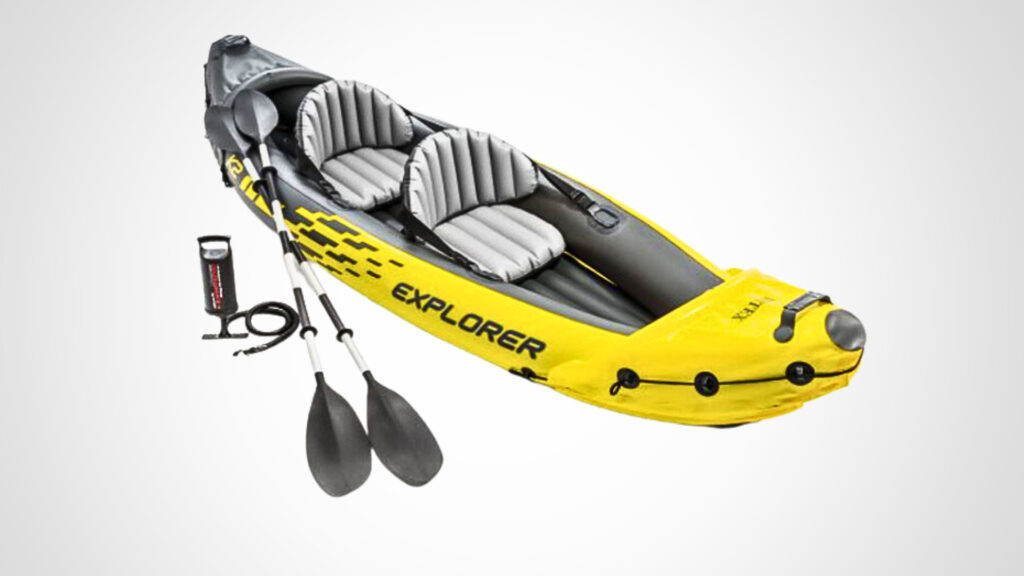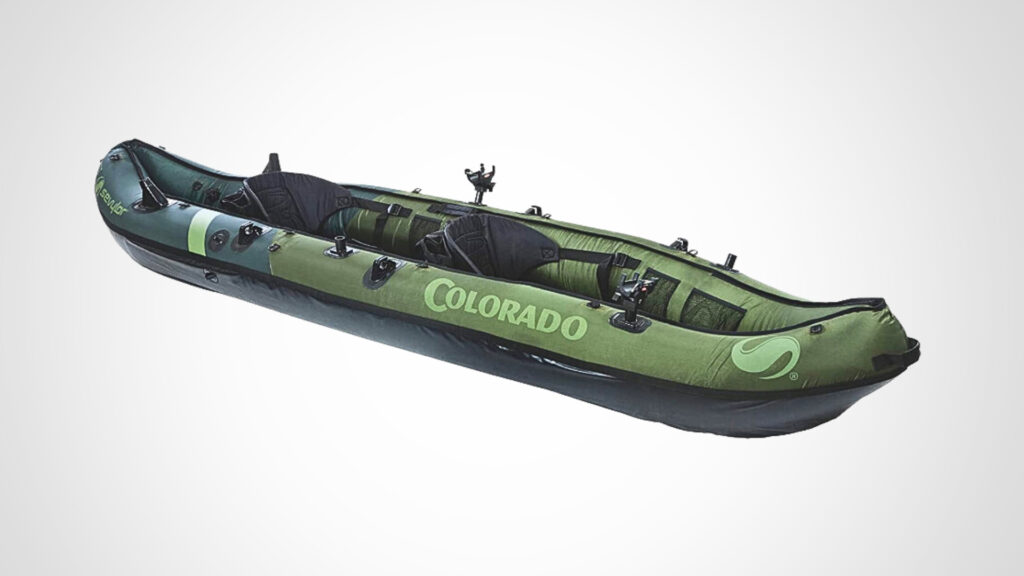Are Inflatable Kayaks Safe? 10 Things You Need to Know
Inflatable kayaks are safe as long as they are used appropriately and follow the manufacturer’s instructions. They are designed to withstand water pressure and resist punctures and tears. However, inflatable kayaks have some limitations compared to hard-shell kayaks.
They may not be suitable for certain conditions like whitewater rapids or extreme weather. Before purchasing an inflatable kayak, it is crucial to consider the type of kayaking you will be doing and the environment you will be kayaking in.
Tips for Safe Kayaking with Inflatable Kayaks
Some people have concerns about the safety of these kayaks. we will discuss the potential dangers of inflatable kayaks and how to mitigate them.
What are the pros and cons of inflatable kayaks?
Pros:
Cons:
Inflatable kayaks in the Ocean?
Inflatable kayaks are safe in the ocean, but it is important to use them only in calm waters, and not in strong currents, waves, or choppy conditions. Additionally, inflatable kayaks designed for ocean use should be constructed with reinforced materials and be able to handle the harsh saltwater environment.
Inflatable kayaks in the Sea?
Inflatable kayaks are safe in the sea, but you should only use them in calm waters and avoid areas with strong currents and waves. It is also important to note that inflatable kayaks designed for sea use should be constructed with reinforced materials to withstand the saltwater environment.
Inflatable kayaks for Fishing?
Yes, inflatable kayaks are safe for fishing as long as they are used properly and in appropriate water conditions. In fact, inflatable kayaks are becoming increasingly popular among anglers due to their portability, affordability, and ease of use. However, there are some important factors to consider when using an inflatable kayak for fishing.
Firstly, it’s important to choose the right type of inflatable kayak for fishing. Look for kayaks that are specifically designed for fishing and have features such as rod holders and storage compartments. These kayaks are generally more stable and offer more room for fishing gear and equipment.
Secondly, always wear a personal flotation device (PFD)
Thirdly, be aware of the water conditions and choose appropriate fishing spots. Inflatable kayaks are generally best suited for calm, flat water conditions such as lakes, ponds, and slow-moving rivers. Avoid areas with strong currents, rapids, or rough water, as these can increase the risk of capsizing.
Inflatable kayaks for Dogs?
Inflatable kayaks can be safe for dogs, but it is important to ensure that the kayak is large enough to accommodate both the dog and the kayaker. It is also essential to ensure that the dog is comfortable in the kayak and is wearing a properly fitting life jacket.
Inflatable Kayaks Around Alligators?
Inflatable kayaks can be safe to use around alligators if certain precautions are taken. Here are some key points to keep in mind:
Advantages of Inflatable Kayaks
Inflatable kayaks offer several advantages that contribute to their growing popularity among kayaking enthusiasts. Let’s explore some of these benefits:
By combining these advantages, inflatable kayaks offer a unique and enjoyable kayaking experience to enthusiasts of all skill levels.
Safety Concerns
When it comes to any water-based activity, safety should be a top priority. Let’s address some common safety concerns associated with inflatable kayaks:
By addressing these safety concerns, you can minimize the risks associated with inflatable kayaking and enjoy your time on the water responsibly.
Are Inflatable Kayaks Safe in the Ocean?
Inflatable kayaks are safe in the ocean, but it is important to use them only in calm waters, and not in strong currents, waves, or choppy conditions. Additionally, inflatable kayaks designed for ocean use should be constructed with reinforced materials and be able to handle the harsh saltwater environment.
Are Inflatable Kayaks Safe in the Sea?
Inflatable kayaks are safe in the sea, but you should only use them in calm waters and avoid areas with strong currents and waves. It is also important to note that inflatable kayaks designed for sea use should be constructed with reinforced materials to withstand the saltwater environment.
Are Inflatable Kayaks Safe for Fishing?
Inflatable kayaks can be safe for fishing, but it is essential to ensure that the kayak is stable enough to support the added weight of fishing gear and catch. Some inflatable kayaks are specifically designed for fishing and have additional features such as rod holders and storage compartments.
Are Inflatable Kayaks Safe in Florida?
Inflatable kayaks can be safe in Florida, but it is important to be aware of the unique conditions of Florida waterways. Florida’s waterways are home to alligators and other wildlife, so it is crucial to take precautions when kayaking in these areas.
Are Inflatable Kayaks Safe for Dogs?
Inflatable kayaks can be safe for dogs, but it is important to ensure that the kayak is large enough to accommodate both the dog and the kayaker. It is also essential to ensure that the dog is comfortable in the kayak and is wearing a properly fitting life jacket.
Are Inflatable Kayaks Safe Around Alligators?
Inflatable kayaks can be safe around alligators, but it is important to take precautions when kayaking in areas where alligators are known to live. Always keep a safe distance from alligators and avoid approaching them.
Are Inflatable Kayaks Safe in the UK?
Inflatable kayaks can be safe in the UK, but it is important to consider the weather conditions and the water temperatures. It is crucial to wear appropriate clothing and always carry safety equipment.
Are Inflatable Kayaks Safe on Reddit?
Reddit is a great resource for information on inflatable kayaks, but it is important to verify the information provided. Always check the source of the information and ensure that it is reliable.
Are Inflatable Kayaks Dangerous?
Inflatable kayaks are generally safe when used appropriately, but like any water activity, there are risks involved. It is crucial to be aware of the limitations of inflatable kayaks and take precautions to minimize the risks.
Best Inflatable Kayak for 2 Person
When selecting the best inflatable kayak for two people, it is important to consider the weight capacity, stability, and ease of use. Some of the top inflatable kayaks for two people include:
Intex Explorer K2 Kayak

This inflatable kayak has a weight capacity of 400 pounds, is stable in calm waters, and includes adjustable inflatable seats and backrests.
Sevylor Coleman Colorado 2-Person Fishing Kayak

This inflatable kayak is designed for fishing and includes multiple air chambers for added safety, a rod holder, and a removable storage bag.
Advanced Elements AdvancedFrame Convertible Inflatable Kayak

This kayak has a weight capacity of 550 pounds, is stable in choppy waters, and can be converted from a solo kayak to a tandem kayak.
Tips for Safe Kayaking with Inflatable Kayaks
To ensure a safe and enjoyable kayaking experience, consider the following tips:
By adhering to these safety tips, you can make your kayaking experience both safe and enjoyable.
FAQ’s
Are inflatable kayaks as good as regular ones?
Inflatable kayaks match traditional kayaks in performance and durability. They’re portable, easy to store, and affordable.
Will an inflatable kayak pop?
Inflatable kayaks are durable but can pop or get punctured if not used and stored properly. Avoid sharp objects and patch any holes immediately. Clean and store in a cool, dry place to extend its life.
Are inflatable kayaks easy to flip?
Inflatable kayaks are stable but can still flip in strong currents or waves. Practice basic techniques and avoid hazards like rocks and branches to minimize the risk.
Conclusion
inflatable kayaks can be safe and enjoyable for kayaking enthusiasts when used appropriately and with caution. It is essential to select the right inflatable kayak for your intended use and follow safety guidelines to minimize risks and ensure a safe and fun kayaking experience

